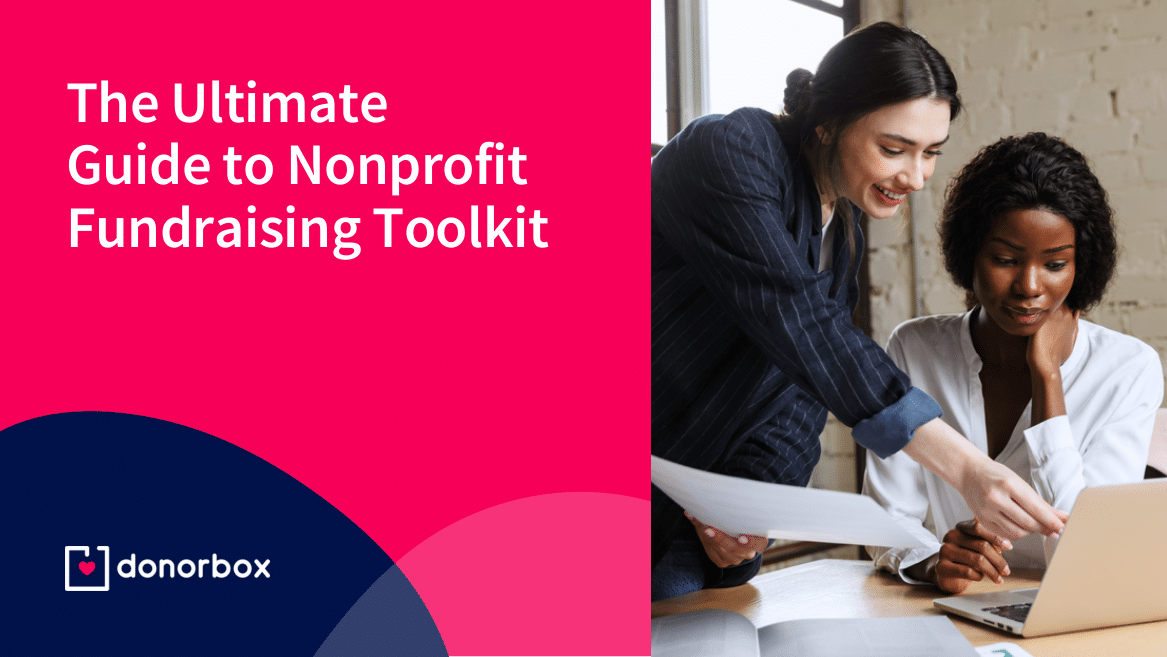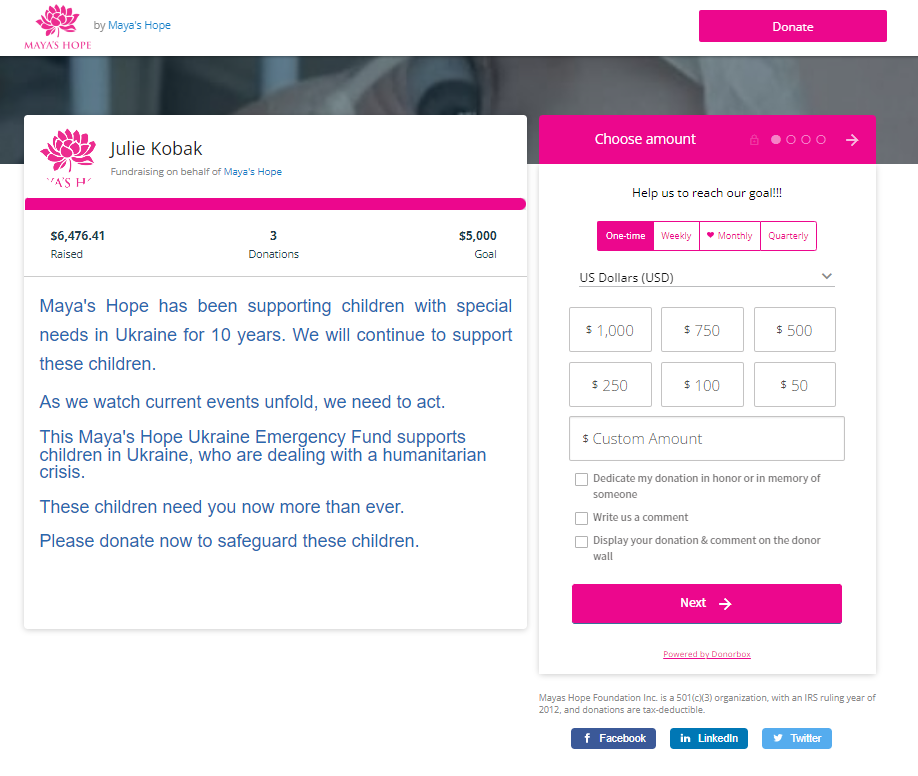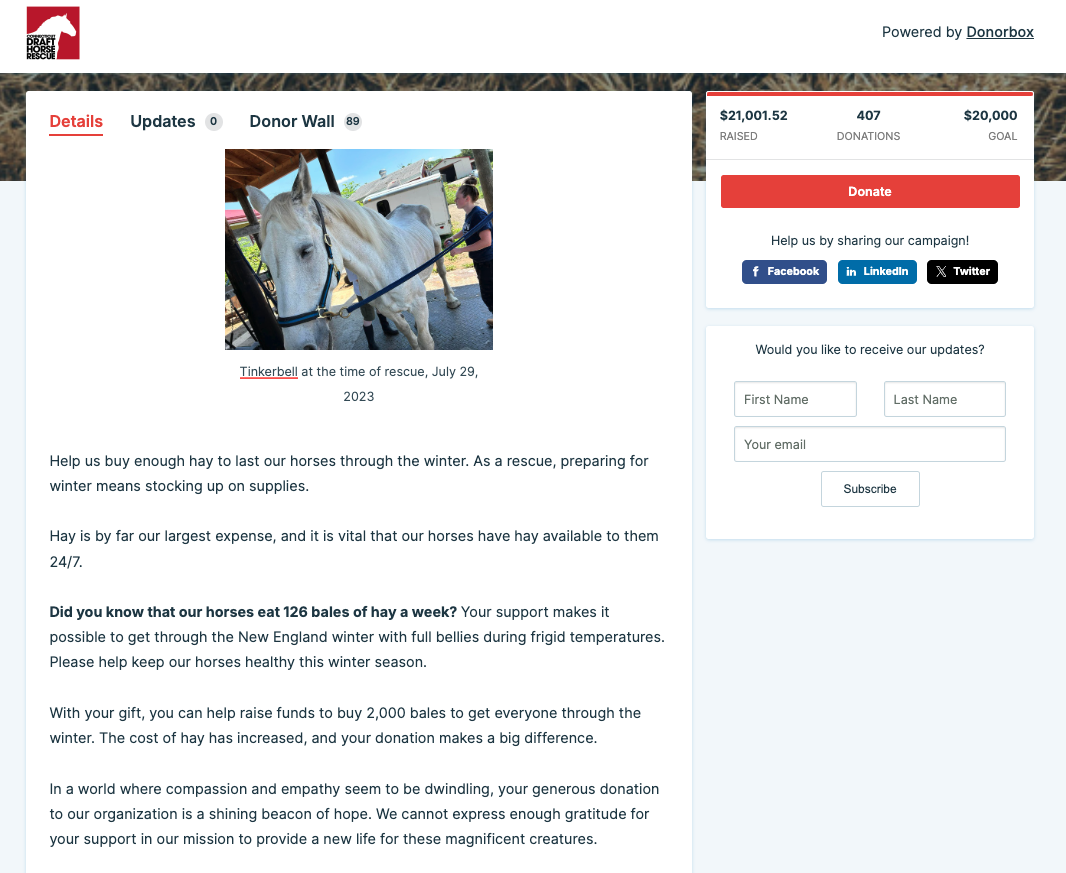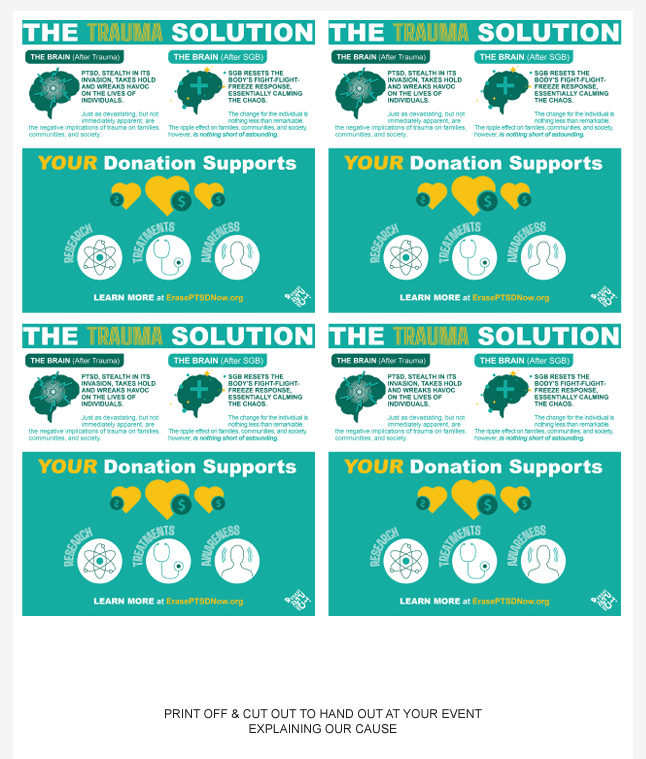The Ultimate Guide to Nonprofit Fundraising Toolkits
Discover everything you need to know about building a fundraising toolkit for a fast track to smoother fundraising.

Discover everything you need to know about building a fundraising toolkit for a fast track to smoother fundraising.

Fundraising is crucial for every nonprofit organization, and so is its success. If you think a way to accept donations is all you need to succeed, it’s time you reworked your strategy to include a complete nonprofit fundraising toolkit that makes raising money for your cause easy and effective – both for you and your fundraisers!
But what goes into that toolkit? We’ve got you covered.
A nonprofit fundraising toolkit is a handy package of resources for your nonprofit as well as people fundraising on your behalf to successfully raise money for your cause. It provides everything you and your supporters will ever need to successfully fundraise for the organization.
Now, suppose someone wants to fundraise on behalf of your organization. You should feel honored knowing that your mission matters so much to someone outside of your nonprofit, too. But you have work to do – you need to give that supporter all the resources they’ll need for a successful campaign. A fundraising toolkit provides those resources in a neat package to help guide your fundraiser to success.
Pro tip: It’s essential that you keep updating your fundraising toolkit as you gain more fundraising experience and come across newer methods and tools. Donorbox is a one-stop shop for nonprofits, focused on developing and offering efficient tools and features that help boost donations and improve donor management efforts.
There are some key reasons why your nonprofit should have fundraising toolkits handy.
While fundraising is of the utmost importance, nonprofits often fret about the planning and resources that go behind it. When you have an ultimate toolkit at hand, this goes out of the way.
You will have the necessary guidelines, step-by-step instructions, templates, and tools to plan your events and campaigns as effectively as possible.
It’s pretty much like you have a master document in place to refer to while getting data and information to create reports or fill out forms. Only that in this case, it makes your fundraising easy and hassle-free.
Someone goes out of their way to help raise funds for your organization. This big step is made much easier for them when they have all the materials they need to make a big impact!
This will include a peer-to-peer fundraising tool that’s easy to get started with and use. Check out Donorbox Peer-to-Peer which makes fundraising highly effective and simple for your supporters. Plus, we have a free course available on Donorbox Academy, that will get you tutorial videos, campaign guides, and ready-to-use templates.
In addition to a platform, you will also need to provide your fundraisers with email templates, campaign updates, and other communication and marketing materials so they can effectively raise money for your organization.
Be it your written fundraising appeals or thank-yous or email messages or social media posts or phone scripts, your messaging needs to match your brand and be consistent.
All your staff and volunteers should have access to the guidelines, regular updates, and sample materials to refer to while fundraising. It’s important to ensure there’s no gap in understanding your organization and its mission before they go on to fundraise for it. This can lead to donor retention issues in the future.
Providing a fundraising toolkit leaves the guesswork out of it so someone fundraising for you can stick with your marketing and content plan.
If their experience is smooth, fundraisers are much more likely to fundraise on your behalf again and again. To start with, make it easy for them to sign up on your peer-to-peer fundraising tool and start fundraising.
With Donorbox Peer-to-Peer, you and your fundraisers can get started within minutes. After you’ve easily created your peer-to-peer fundraising campaign, invite your supporters right from the tool. They’ll receive email invitations from Donorbox to sign up or log in to customize their peer campaign pages to start raising money for you.
Watch the video to know what our happy user, Revelation Wellness, has to say about Donorbox Peer-to-Peer.
Get Started with Donorbox Peer-to-Peer
To maintain a relationship with regular fundraisers, update your fundraiser toolkit regularly so they have the best information and materials available. This will help develop ongoing fundraisers who come back again and again. You should check out our range of guides, examples, and best practices that we’ve curated to help you and your supporters excel at peer-to-peer fundraising.
Having the right type of fundraising toolkit will depend on what kind of fundraising someone does on your behalf. Here we have listed some examples of different types of fundraising toolkits you might want to have on hand.
Peer-to-peer fundraising is the most common example of someone fundraising on your organization’s behalf.
Usually, you’ll create a main campaign online, called a “parent” campaign, and invite supporters to create their own “child” fundraising pages. Supporters share the link to their fundraising page with their networks. Any donations received flow directly to the parent campaign and your nonprofit.
Donorbox Peer-to-Peer works exactly this way – plus it makes the process even easier! Here’s an example of a successful peer or child campaign created by a supporter to help Maya’s Hope. The main campaign has raised nearly a million dollars in donations with Donorbox.

Having a user-friendly and effective fundraising tool for peer-to-peer helps supporters feel more confident soliciting their network on your behalf. However, you need to also help them with more resources such as your campaign story, images or videos to share online, campaign updates, email templates that they can use to solicit their networks, and more.
Your board members are your greatest resource for connecting with new donors. And although they’re involved in your organization, they might not be fully comfortable fundraising – or they might not be able to really sell your organization.
That’s where a board fundraising toolkit specifically designed for them comes in! This will help them fundraise for you on a higher level.
Pro tip: Include your board fundraising toolkit with the rest of your board member onboarding materials. This should include a detailed account of your organization’s history, structure, mission and vision statements, staff and volunteers’ details, past event information and stats, annual fundraising events, key areas that need attention, current fundraising strategies and tools, guides to help start a campaign, their roles and responsibilities in fundraising, and more.
A capital campaign is a huge undertaking. It also usually includes specific fundraising branding and messaging. A capital campaign fundraising toolkit helps everyone – both inside your organization and out – understand the requirements of the campaign and how to solicit for the campaign’s specific goals.
Your capital campaign toolkit should facilitate several key areas including and beyond fundraising, as follows:
Pro tip: While choosing your crowdfunding or fundraising platform, make sure that it helps your donors and fundraisers share the capital campaign through social media. This generates social proof – and it’s easy to do with Donorbox fundraising and crowdfunding pages. Check out this example of a crowdfunding capital campaign created with Donorbox Crowdfunding, where sharing on Facebook, LinkedIn, and Twitter is made super easy.

Fundraising events are common and essential when it comes to fundraising for your nonprofit. But at the same time, they take a lot of effort, time, and budget to implement successfully.
A fundraising toolkit that has everything from a planning checklist to event ideas to past success or failure data to an event ticketing tool in place is needed to ensure your success.
Plus, your supporters may be interested in hosting and planning events on your behalf. These can be virtual or in-person and can involve a wide range of activities. You should ensure that they have all they need to plan, host, and market these events and fundraise successfully.
Here’s an example of an event fundraiser toolkit created by Erase PTSD Now to make event-hosting easier for their fundraisers.

It’s important to start your fundraising toolkit with a warm, genuine thank-you to the person going out of their way to raise funds for your organization.
This letter should come from someone significant in your organization – the board chairman, the chief development officer, or even the president/executive director.
This letter is also a place to share some basic information about your organization like its history and mission. In addition to thanking them for participating, you’re reminding them why they chose to fundraise on your behalf in the first place!
For efficacy with your fundraising, choose a fundraising tool that has it all. It should not just let you create online donation forms to accept donations but also make it easy to create customized fundraising campaigns, crowdfunding pages for capital campaigns, peer-to-peer fundraising pages, event pages and ticketing forms, and membership campaigns.
Such as Donorbox – our range of features make sure that you get to fundraise in many ways and in the most effective manner possible. We also let your donors make quick donations through digital wallets, which comes as a part of our UltraSwift ™ Pay feature.
You can create fundraising campaigns and easily turn them into peer-to-peer campaigns. Plus, we let you create customized event pages and ticketing forms. You can add unlimited ticket tiers to your ticketing forms and even embed them on your website.
Finally, if creating a membership campaign is part of your fundraising strategy, you can do that very easily with Donorbox Memberships. We let you create membership forms and campaign pages to accept monthly and yearly payments. Your members will be able to log in to their own accounts and manage their membership plans.
Getting started with Donorbox takes just 4 simple steps – watch this video to know!
Someone should read through your fundraising toolkit and know exactly what to do. That’s why including instructions for setting up a fundraising page is so essential – it takes the hard work out of it.
Design these instructions with screenshots of what they’ll actually see and clear visuals. Nothing is more frustrating than confusing instructions!
With Donorbox, it will not be a concern. We have ample step-by-step guides, tutorial videos, and free courses to set you up for fundraising success. Here are some resources that will help you right away –
Explore our Nonprofit Blog, Donorbox Academy, and Donorbox Library to find more useful guides and resources on easy fundraising with Donorbox.
This section is one of the most helpful you can provide. It gives fundraisers the context and script needed to adequately solicit donations for your organization.
Talking points usually cover 3 areas:
Pro tip: To come up with great talking points, consult stakeholders throughout your organization. What’s more interesting or important in their opinion? Getting a variety of talking points is best.
These high-level tips can include everything from basic fundraising know-how to specific tips for your events and campaigns.
Some of these tips might be about
Set them up for success with all the tools they’ll need.
If you’re working on an event fundraising toolkit, be sure to include guidelines for what the event should look like. Ultimately, these fundraisers are representing your organization, so you want to make sure they do so the best way.
This can include ideas for events – like hosting a book club, a plant sale, a dinner party, etc. You may also want to help them plan the event well. Here’s a free event planning checklist that we have created to help your nonprofit make the most of your fundraising events.
Finally, you should help your event fundraisers sell more tickets for which they’ll need a tool that does it most efficiently.
Donorbox Events lets you create customized event pages that can include text, images, and videos. You can add unlimited ticket tiers to the event to sell tickets online and set a deadline to purchase tickets. It is possible to easily calculate and highlight the tax-deductibility of each ticket tier. Donorbox Events also lets you accept donations right from the ticketing form. These features ensure that you and your supporters are able to boost revenue through ticket sales.
Make life easy by including fliers and other handouts directly in your fundraising toolkit. If your toolkit is a hard copy, your supporter can simply make copies and distribute them.
More likely though your toolkit will be digital, in which case your supporter can print and cut out any materials. Just make it clear what the materials are for.
Social media marketing can feel daunting enough – but especially when you’re fundraising! Give your fundraisers the tools they need for success on social media.
A social media guide should include branded images that fundraisers can repost, sample posts, and any specific hashtags for the campaign. You should also want to share tips on when to post and what to include in captions for more reach.
Remember to include all your social media account details in the toolkit. This makes it easier for your fundraisers to tag you while posting updates.
This basic section provides a lot of value for your fundraising toolkit. Your fundraiser can review these to find answers to their questions and to learn more about the process of fundraising.
Compiling FAQs can be easy, too! In addition to thinking about what info your fundraisers might need, simply collect questions and answers that come in and update your toolkit.
Fundraising emails, letters, and invites are of high importance to creating and maintaining lasting relationships with your donors. Including handy templates in your fundraising toolkit will help your internal fundraising team as well as your volunteers to make quick changes to send them out whenever needed.
Plus, templates ensure that the main features of your campaign remain – and your messaging stays on point. Your fundraisers won’t have to worry about finding your organization’s logo and branded images when they already have the templates available with them.
Donorbox has a number of articles that include free templates for your fundraising appeal letters and emails. Here are some you should add to your toolkit right away –
Fundraising may be one of the most regular things nonprofits are required to know and do but its takes a lot to find success with it. Whether you have supporters to fundraise and host events or you are doing it yourself, a nonprofit fundraising toolkit is a must-have.
It’s your nonprofit’s foremost responsibility to keep everything you need to effectively fundraise at hand. You can create a single toolkit including all tools and details for any type of fundraising or have different types of toolkits for a more organized approach. It depends on what suits your organization and how feasible it is for you.
And as you embark on creating a fruitful fundraising toolkit, Donorbox is there to make the job easy! Our wide range of powerful tools and features are developed with both nonprofits and donors in mind. Sign up for free to start fundraising today!
Get hundreds of templates and samples as well as useful guides at our Nonprofit Blog. Subscribe to our monthly newsletter to receive a collection of Donorbox’s best resources directly in your inbox.

Subscribe to our e-newsletter to receive the latest blogs, news, and more in your inbox.

